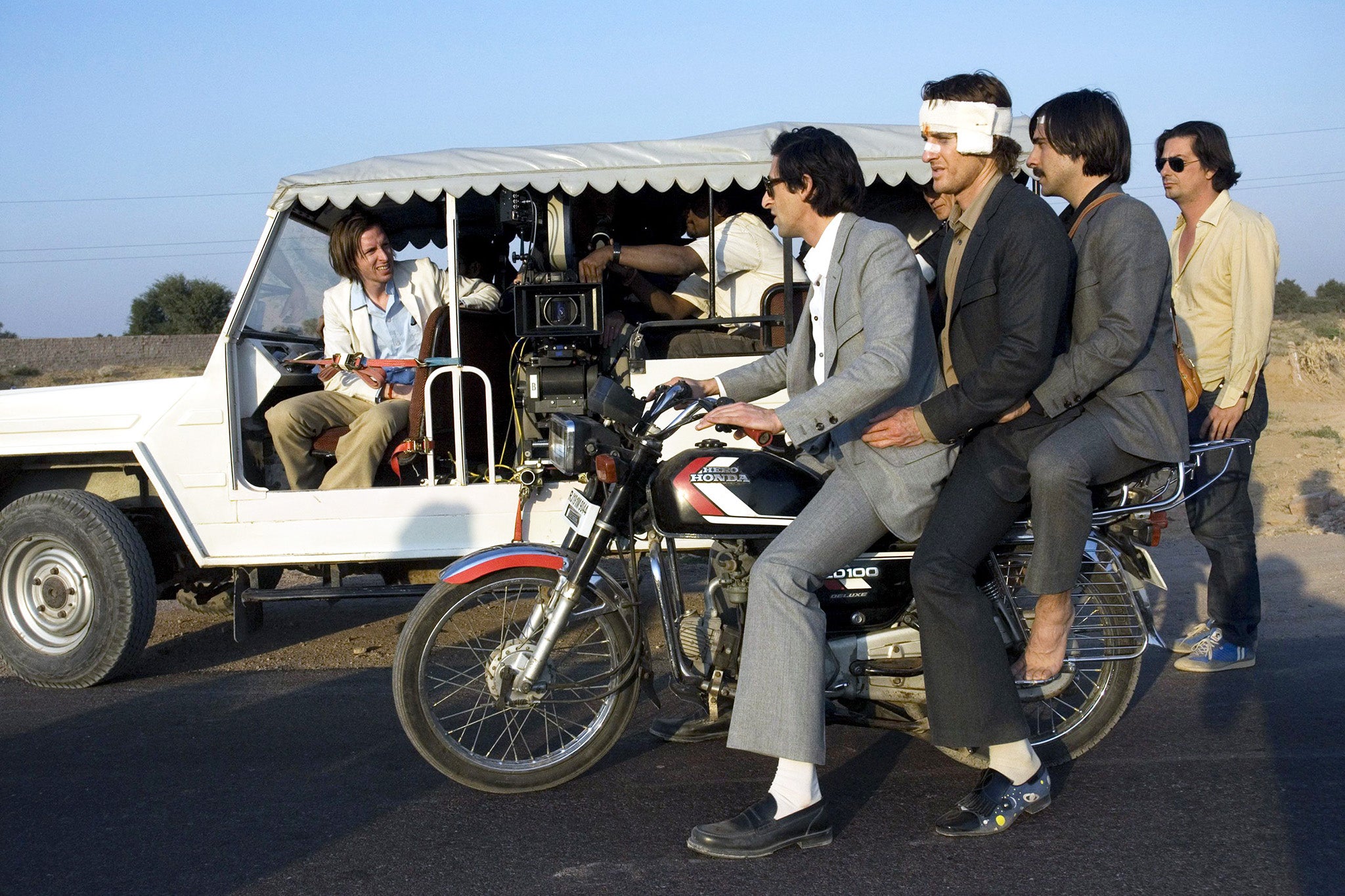A curious thing about Wes Anderson, the immaculately tailored king of immaculately tailored cinematic trifles, is that he doesn’t get bad reviews. Not really, anyway. His films, from the ornate The Grand Budapest Hotel to this week’s delectable The Phoenician Scheme, earn the most effusive raves imaginable or shrugging, innocuous whiffs. And that’s more or less been the case since 2004’s The Life Aquatic with Steve Zissou, a dazzling tribute to oceanic voyage that, despite its many fans, including myself, was met with such critical disdain at its time of release that it sent Anderson into an emotional tailspin.
It remains the only time in Anderson’s 12-film career (plus a handful of recent Netflix shorts) in which ill-feeling properly engulfed his output. Not that the specific criticisms back then (Anderson is “frozen into a mannerism”, wrote The New Yorker’s Anthony Lane) would necessarily feel out of place in reviews of his subsequent eight movies. Instead, those mannerisms – the obsessive detailing and fondant fancy scenery, the deadpan affect of his actors, those clean, boxy typefaces – have been doubled down upon and, moreover, embraced. So much of modern American cinema seems style-resistant, stories conveyed via sludgy, Brothers Russo-ian grey, that it feels baffling – insane, even – to condemn a filmmaker still interested in raw, aesthetic beauty.
Anderson does continue to evolve as a screenwriter, with both The Phoenician Scheme and his spacey 2023 black comedy Asteroid City awash in themes of grief and existential dread – they feel aged, mordant, and often gloomy compared to the precociousness of his earlier work. That isn’t to say, though, that there’s no stasis to his current output. Incapacitated is the package that surrounds those stories, from the way his films are sold and promoted, to the familiar faces of the travelling roadshow that make up his ensemble casts.
Familiarity isn’t a massive problem when it comes to auteurs. I can watch Anderson’s large-scale dioramas of lush, fantastical vistas just as much as I can watch Rian Johnson invert old Agatha Christie novels, or Nancy Meyers invent new sizes of kitchen. But familiarity is also safe. It’s a cosy hug. A warm blanket. Missing from Anderson’s work of late is a prickliness, or a danger. Or anything that could inspire revolt. And the key to it, I think, might be to let him flop again.
Speaking to New York Magazine this week, Anderson discussed his resistance to chasing spontaneity on set, and how – for more than 15 years – he has meticulously planned each shot of his films in “animatics”, which are essentially storyboards. They are typically used for animation – he began using them on 2009’s stop-motion Roald Dahl adaptation Fantastic Mr Fox – but he now uses them for everything.
It felt revealing. When asked where spontaneity does lie in his work, Anderson replied that it stems from his stars. “When you’re working with somebody like Benicio [Del Toro], or somebody like Timothée Chalamet, or Benedict Cumberbatch, those are all actors who dare you to capture whatever happens this time,” he explained. “They’re going to go this way, and then they’re going to go that way, and you get to say, ‘Okay, let’s see what’s going to happen here.’” But when so many of those very actors perform in that flat, characteristically Wes Anderson register, how much variation can truly be found?
Arriving shortly after The Royal Tenenbaums crystallised Anderson’s reputation as a master of studied, familial tragicomedies, The Life Aquatic was Anderson cubed: more expensive than anything he had made before or since, full of CGI and David Bowie songs, and made with a cast of A-listers stuffed into close quarters. It tracked the adventures of an eccentric oceanographer (Bill Murray) as he sought revenge against the shark that killed his partner, with Cate Blanchett, Willem Dafoe and Jeff Goldblum along for the ride. But the production proved difficult, Anderson intimated by the film’s scale and the demands suddenly placed upon him in the wake of Tenenbaums. When it opened to poor reviews, he fell into what New York Magazine termed in 2007 a “low-simmering melancholy”; ideas stalled and he left the US for an apartment in Paris to recuperate.
What materialised courtesy of that crisis was The Darjeeling Limited, a tourist odyssey in which Owen Wilson, Adrien Brody and Jason Schwartzman play estranged brothers shuffling through India. On the set, Anderson would be nervous and distrust his instincts. “Okay, am I doing too much of a ‘thing I do’ here?” he’d ask his crew.
The Darjeeling Limited drew a divisive response, if a little better than The Life Aquatic, and to this day, it is probably the Anderson film that inspires the most extreme stances. You can see why. It’s shaggy and unformed, as if it were made on the fly, which it sort of was. I couldn’t bear it when I first saw it, finding it so loose as to be somewhat smug. But it’s since grown on me, primarily because it exemplifies everything that Anderson has otherwise scrubbed from his subsequent work.

Over the decades that followed, and films including his beguilingly nerdy coming-of-age tale Moonrise Kingdom and The Grand Budapest Hotel, which earned him his first Best Director Oscar nomination, Anderson has only grown in popularity. The existential crises quelled, he has become more powerful than ever. Studios provide him creative and financial carte blanche (“For executives, supporting Wes is like collecting art,” a friend of Anderson’s told New York Magazine. “It makes them feel they have great taste”), while the sheer amount of money to be made from the idea of an Anderson aesthetic has proven infinite.
A popular Instagram account, Accidentally Wes Anderson, curates photographs of real-world sights that apparently wouldn’t look out of place in his films, while one of the earliest pop-cultural debates about AI revolved around a short-lived digital trend that created alleged Anderson-like tableaus out of thin air. All of this is, of course, nonsense – internet memes that skirt the soul of Anderson’s work and instead reduce him to a collection of bland tropes: symmetry, pastel colours, architectural whimsy.
However, it all speaks to a feeling that Anderson has become a little too big to fail, a little too comfortable with his traditional stable of tricks. It is significant, I think, that the elements of his two recent features most effusively praised are the newcomers to Club Anderson: the poignancy of Margot Robbie’s cutting-room-floor actor in Asteroid City, or the endearing silliness of Michael Cera’s professor of bugs in The Phoenician Scheme. On-screen, both feel strikingly new – shocks of growth in traditional packages. I don’t wish for Anderson to once again experience the crippling self-doubt that trailed him after The Life Aquatic, but I’d be interested to see what he’d produce if he was operating on the back foot once more. What kind of Wes Anderson would exist if the reviews became pans, the fandom got alienated, or the budgets got slashed? It could very well be a total mess. But wouldn’t that be fascinating?
‘The Phoenician Scheme’ is in cinemas from 23 May
Spike Lee says ‘people are hurting’ in jab at Trump’s foreign-made film tariffs
Wes Anderson makes fun of Donald Trump’s ‘fascinating’ film tariff plan
The Phoenician Scheme is one of Wes Anderson’s best films in years – review
Guy Ritchie’s decision to give up the geezer act might be a stroke of genius
A View to a Kill at 40: No, it’s not the worst Bond ever
Stanley Tucci’s love of cooking has sent his film career into a spiral of mediocrity







